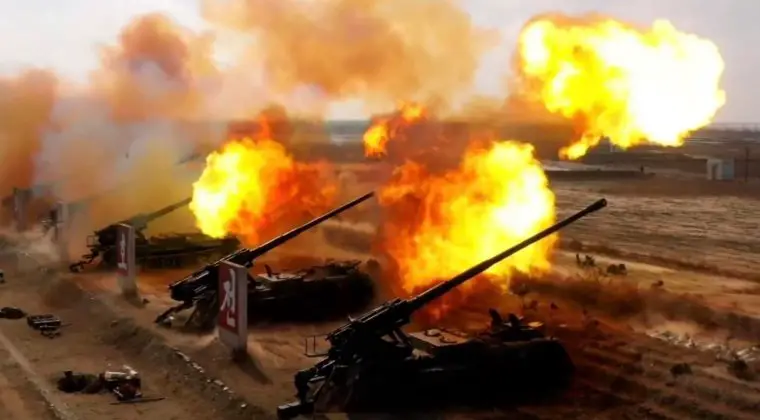<p >Newly released images have confirmed the arrival of North Korea’s largest calibre of artillery gun, the <a href=" target="_blank">170mm Koksan self propelled system</a>, in Russia. In a <a href=" target="_blank">previous assessment </a>on October 31, Military Watch highlighted the possibility that Koksan guns could join the ongoing Russian war effort against Ukraine and its&nbsp;<a href=" >Western supporters</a>, on the basis of widespread reports that Korean People’s Army personnel had been <a href=" target="_blank">deployed</a> in considerable strength to Russia for combat operations. The Koksan is the second largest howitzer in the world, exceeded in size only by the Soviet 2S7M Malka currently fielded by both Russia and Ukraine. Unlike the Soviet system, however, which has a relatively short range and was only ever fielded in a small number of units, the Koksan is very widely deployed by the Korean People’s Army and has one of the world’s longest ranges. Its central role in the country’s artillery forces make it one of the most likely assets to be deployed should North Korean ground units be <a href=" target="_blank">joining a war effort</a>. With North Korea deploying by far the world’s largest artillery force, the country’s expertise in the field has long been highlighted by Russian and overseas analysts as an area where support would be <a href=" target="_blank">particularly valued</a> in the Ukrainian theatre.&nbsp;</p><p ><img src=" title="North Korean Koksan 170mm Guns"></p><p >The Koksan is deployed on the chassis of the Soviet Type 54/55 tank, a reliable and widely used vehicle which formed the backbone of North Korea's armoured units until the 1980s. The chassis' simplicity makes the Koksan relatively easy to service and maintain. The artillery system has been modernised and enhanced multiple times to improve its efficiency, its ammunition carriage and its range, while operations on a considerable scale during the Iran-Iraq War in Iranian hands ensured that the system was combat tested over several years.&nbsp; Details on the multiple newer variants of the Koksan developed since the 1970s remain limited, however. The 170mm system’s service entry in the late 1970s closely coincided with the North Korea’s development of its first ballistic missiles, and while the standing of the country’s defence sector has risen tremendously over the past 45 years, the guns are&nbsp; still highly prized for their ability to lay down fire over great distances and at very low costs compared to rocket artillery or missiles.&nbsp;</p><p ><img src=" title="North Korean Leadership Inspect 170mm Artillery Units"></p><p >Previously approximately 75 percent of North Korean artillery rounds shipped to Russia were of a 152mm calibre, with the remainder being 122mm rounds.&nbsp;The arrival of 170mm guns, which are likely to be manned by North Korean forces at least initially, will necessitate shipments of a third calibre of Korean artillery round to Russia – which has already <a href=" target="_blank">received over 6 million rounds</a> from its eastern neighbour. North Korea’s wholly unrivalled capability to supply artillery is likely to have been a major game changer for Russia’s ability to wage war in the Ukrainian theatre, providing a distinct advantage over the Ukrainian Army’s much more limited supplies from the West.&nbsp;The Koksan’s estimated 65 kilometre firing range&nbsp;provides it with a significantly longer reach than the much smaller 152mm and 155mm guns Ukraine currently deploys, although it remains uncertain whether precision guided rounds have been developed for the system. The deployment of Koksan guns opens a number of possibilities for further defence cooepration between Moscow and Pyongyang, including the guns eventually being inducted into the Russian Army, or Russia and North Korea potentially jointly developing new classes of guided 170mm round to further enhance performance.&nbsp;Should the fielding of 170mm gun prove to have a significant impact on the battlefield, the development of a mobile howtizer of this calibre by Russia with North Korean support also remains possible.</p>
North Korean Koksan Superheavy Artillery Arrives in Russia: Why 170mm Guns Are Bad News for Ukraine

